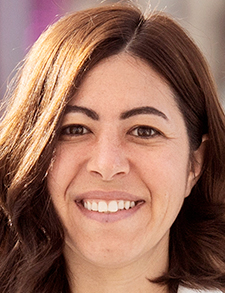
Dr. Hadley
Presenters: Nicholas Beam, MD, Jeri Kessenich, MD, Jillian Bybee, MD, and Brett Leingang, MD
Delirium is underrecognized in the pediatric acute care spaces, both in the intensive care unit and on the general medical floors. Studies have reported that the incidence of pediatric delirium is 20% to 65% of pediatric intensive care unit (PICU) patients and 10% to 40% of all hospitalized children.1 Delirium is defined in the DSM-5 as a disturbance in attention and alertness, with an abrupt change from baseline, which fluctuates, is not explained by pre-existing neurocognitive disorders, and has evidence of a cause.2 Delirium can present as hypoactive (listless, withdrawn, reduced activity or awareness), hyperactive (restless, agitated, inconsolable), or mixed, motor sub-type.
In pediatric patients, risk factors for delirium include age (less than two years old), mechanical ventilation, intensive care stay longer than five days, major surgery, presence of medical co-morbidities, and underlying developmental disabilities. Precipitating factors include drugs and toxins (barbiturates, benzodiazepines, antihistamines including diphenhydramine, narcotics, steroids, psychotropic meds, tricyclic antidepressants, etc.), infections, metabolic derangements, systemic organ failure, neurological disorders, and physical disorders. The PHM 2023 presenters shared a helpful mnemonic BRAIN MAPS to remember the causes.3
B: Bring oxygen: hypoxemia and anemia
R: Reduce: remove deliriogenic drugs
A: Atmosphere: lights, sounds, unknown people
I: Infection, immobilization, or inflammation
N: New organ dysfunction
M: Metabolic disturbances
A: Awake: sleep disturbances
P: Pain
S: Sedation
Delirium can affect patient outcomes. Length of stay, after controlling for illness severity, has been reported to be 2.3 times longer for patients with delirium, and studies have shown that pediatric delirium is independently associated with increased hospital costs and higher mortality risk.4,5 The observed behaviors of inconsolability, agitation, or reduced awareness can be distressing to caregivers, especially if not identified by the care team as delirium.
Identifying and treating delirium is crucial to improving outcomes. The Cornell Assessment of Pediatric Delirium is one option for a screening tool that can be used in the PICU and has been used in multiple institutions on the general care floors.6 This bedside assessment can be completed by nursing staff twice daily and charted for trending within the electronic health record.
The mainstay of treatment is to identify and treat the underlying cause and remove risk factors as much as possible. Non-pharmacological treatment includes re-orienting the patient to a day/night schedule, removing lines and tubes as able, minimizing sleep disruptions, and encouraging mobility. Melatonin can be used to promote normal circadian rhythm and anti-psychotics may be required, but their use should be limited and ideally involve psychiatry if possible.
Given that pediatric delirium is underrecognized and can affect patient outcomes, pediatric intensivists and pediatric hospitalists need to understand the presentation, diagnosis, and treatment as outlined above. The presenters encourage the development of a multidisciplinary workgroup at your institution including key stakeholders from nursing, psychiatry, neurology, hospital medicine, child life, and others to determine the best approach to screening for and treating delirium at your institution.
Key Takeaways
- Delirium is an underrecognized problem in pediatrics and can be difficult to identify in children.
- Hospitalists should be aware of the subtypes of delirium: hypoactive, hyperactive, and mixed.
- Use the BRAIN MAPS mnemonic listed above to remember the causes.
- The mainstay of delirium treatment is to treat the underlying cause and remove precipitating factors. Non-pharmacologic treatment includes re-orientation and schedule, minimizing sleep disruptions, and encouraging mobility. Melatonin can promote circadian rhythm. Antipsychotics may be necessary to treat symptoms of delirium but ideally are used in conjunction with psychiatry.
- Delirium can affect patient outcomes such as length of stay, cost, mortality, and time to neurologic recovery.
- Consider the development of a multidisciplinary workgroup at your institution to discuss screening and treatment; screening tools such as the Cornell Assessment of Pediatric Delirium can be implemented to increase case recognition.
Dr. Hadley is a med-peds hospitalist and chief of pediatric hospital medicine at Corewell Health/Helen DeVos Children’s Hospital in Grand Rapids, Mich. She is an assistant professor of internal medicine and pediatrics at Michigan State University College of Human Medicine in Grand Rapids, Mich. Dr. Hadley also serves on the editorial board of The Hospitalist.
References
- Traube C, Silver G, et al. Delirium in critically ill children: an international point prevalence study. Crit Care Med. 2017;45(4):584-90.
- American Psychiatric Association, DSM-5 Task Force. (2013). Diagnostic and statistical manual of mental disorders: DSM-5 (5th ed.). American Psychiatric Publishing, Inc.. https://doi.org/10.1176/appi.books.9780890425596
- Smith HA, Brink E, et al. Pediatric delirium: monitoring and management in the pediatric intensive care unit. Pediatr Clin North Am. 2013;60(3):741-60.
- Traube C, Silver G, et al. Delirium and mortality in critically ill children: epidemiology and outcomes of pediatric delirium. Crit Care Med. 2017;45(5):891-8
- Meyburg J, Dill M, et al. Patterns of post-operative delirium in children. Pediatr Crit Care Med. 2017;18(2):128-33.
- Traube C, et al. Cornell Assessment of Pediatric Delirium: a valid, rapid, observational tool for screening delirium in the PICU*. Crit Care Med. 2014;42(3):656-63.